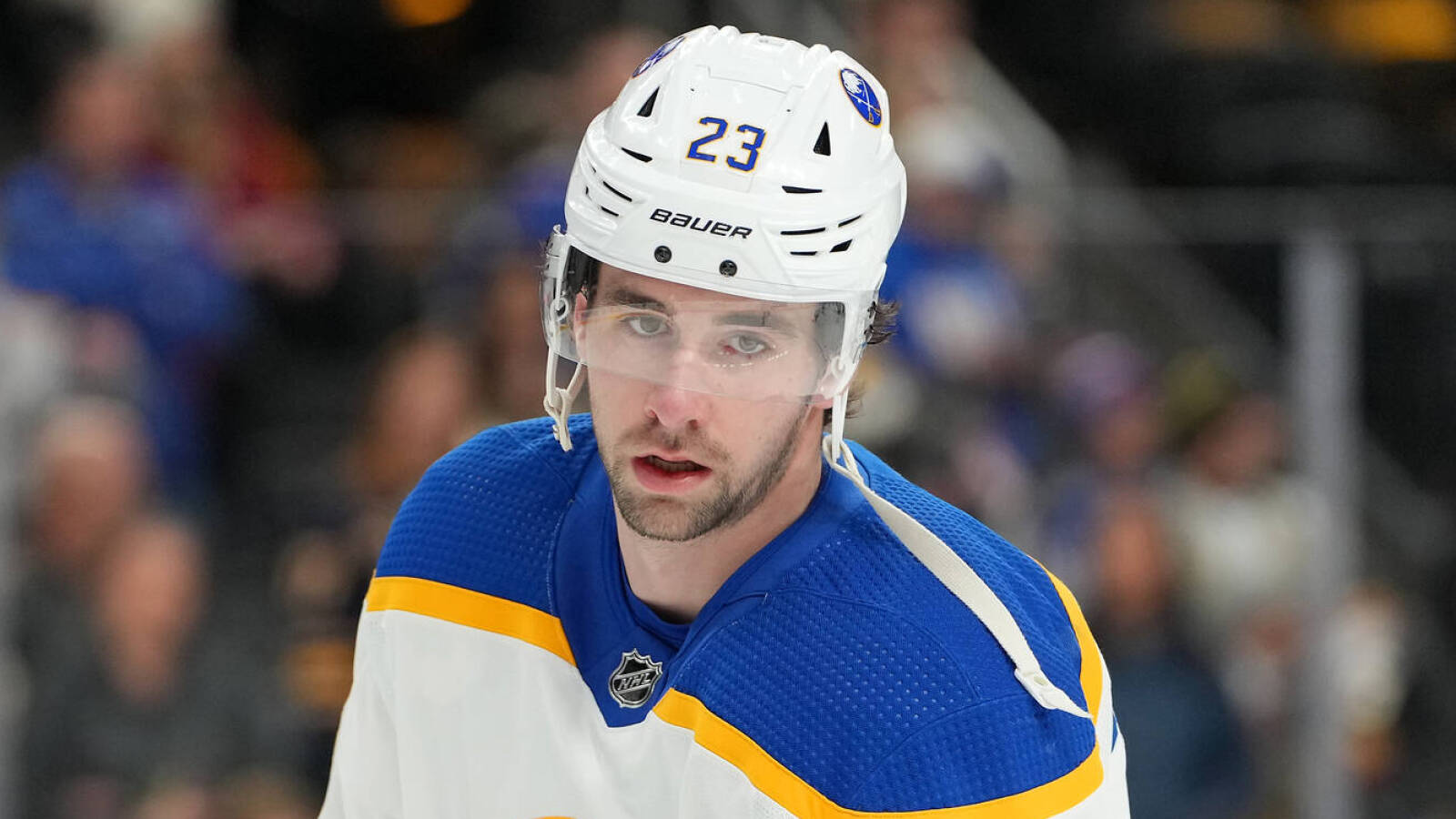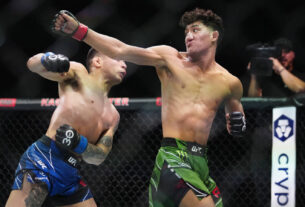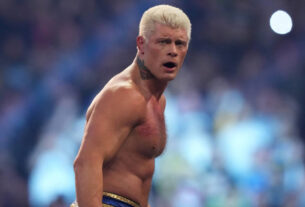Unless you’re a fan of the team or a hockey nerd, when you saw the news that Mattias Samuelsson of the Buffalo Sabres and Mikey Anderson of the Los Angeles Kings were signed to respective seven and eight-year extensions, you probably were wondering why they got that kind of term. You may have even been wondering who they were.
But, those two players are the start of a new market for defensemen, particularly the archetype of the defensive defenseman. They don’t have the slick skating and hands of a Cale Makar or a Roman Josi, but they bring a completely different combination of skills to the table that allows them to be good at what they do, and it’s why they are worth the kind of term they’ve started to receive.
Last week, I took a look at why some veteran defensemen are starting to end up on bad contracts when they reach their UFA years, largely because of how the league has changed, and a lot of the people in the sport still haven’t caught up. This week, I’m going to be a lot nicer and look at why these two particular defensemen are great examples of what “catching up” looks like.
The New Defensive Defenseman
What the defensive defenseman is now is not necessarily a brand new concept, but it has evolved significantly.
When a lot of people think of a defensive defenseman, they picture the good old days of Scott Stevens and Chris Pronger. Those specific players could put up points, so they weren’t true defensive defensemen, but they best represented the ideology of it. In the 2000s, they’d be that big physical presence on the blueline that would make a forward’s life difficult in front of the crease and along the boards, lay out a big hit if they caught someone with their head down and allow their more offensive partner to focus on scoring.
That balance continued into the 2010s, but the game became a lot faster and a lot smarter, so the defensive defenseman adapted to that stay-at-home presence that you paired with your offensive defenseman so that they could jump up into the rush. The puck-mover had that rock behind him that would provide some coverage in case things went wrong. Sometimes they still had that physical touch, like Johnny Boychuk, and sometimes they were an under-the-radar defenseman playing above their weight who could still hold their own with a play-driving partner, like Michal Kempny.
However, the 2010s were also the start of what has since become the norm in the 2020s, because staying at home started to become a liability. It often meant that the other defenseman was relied on more to move the puck, which allowed opponents to focus on one defenseman to keep the puck from going up the ice. In order to really gel and succeed as a pair in the modern era, a team needs both defenseman on a pair to move the puck well and give the team multiple threats on the back end for outlet passes and zone exits to create pressure on the other team.
Whether it was Jake Muzzin anchoring Drew Doughty on the top pair, Niklas Hjalmarsson eating up all the tough minutes so that Duncan Keith and Brent Seabrook could dominate easier minutes or Jared Spurgeon and Mattias Ekholm providing support, we’ve seen defensive defensemen grow into these all-around defenders over the past 10 years, and now it’s a staple in most lineups.
But the market hasn’t quite found a way to capitalize on the best years for these types of defenders, often not recognizing their contributions until well after the fact and then paying them for it in their 30s when their best years are behind them. Until now.
Enter Samuelsson and Anderson
The reason why I mentioned Samuelsson and Anderson off the top is because the Sabres and Kings jumped the gun on these two defenders and may reap the rewards of it in the long term.
The Sabres and Kings saw what they had in these two defenders, and they went for it. Samuelsson is signed to under $4.3 million per year for his age 23-30 seasons, and Anderson will make under $4.2 million for his age 24-32 seasons. For the entirety of their prime years, they’ll be well underpaid, and even if they fall off a bit in those final couple years, those cap hits won’t be huge burdens, especially the cap increases more every year.
It is to evaluate defensive defensemen. Getting guys who are good at the role signed for cheap in their primes not only guarantees having them, but also eliminates the risk of getting someone who appears to be good at it, but isn’t, and locking them up to significantly worse contracts.
There is still a risk involved. The Sabres signed Samuelsson after just 54 NHL games, and Anderson’s deal comes before he’s hit the 200 game mark. However, the added benefit of getting some RFA years into this long-term deal is that if it’s obvious very early into their deals that they aren’t what you thought they were, they can be bought out with significantly smaller damages than a UFA contract.
For Samuelsson, the Sabres have a window of the next three seasons where they can buy him out with a cap hit of under $800,000, and for Anderson, it’s the next two seasons where it’s $700,000 or less. Even if they want to do it after that, their buyout cap hits are around $1.4 million, which isn’t ideal but far from the worst case.
It’s what the Ottawa Senators did with Colin White when his deal didn’t pan out, and as a result, they only have $875,000 on the books for five of the next six seasons, with that other year seeing them get a cap bonus of $625,000 in 2024-25. It’s likely not on the minds of either the Sabres or Kings to go that route, especially for the Kings with Anderson being a bit more of a known commodity, but it is an added insurance policy in case things go south quick.
The bigger focus should be on the fact that they have these players locked up throughout their entire primes on deals that look to be well worth the cost, and they’ll probably be underpaid for a majority of the time. It’s a bet with some risk, but it’s a smarter bet than what a lot of other teams have been doing, and if they pay attention, they could capitalize on it next.
So who’s next?
The market is a tricky one, because you can’t just give this kind of contract to any young up-and-coming defensive defenseman. You have to pay attention to what the market is looking like for them, you have to pay attention to the kind of role they are in and you have to make sure that they aren’t heavily sheltered in that role and are thriving it.
One defenseman that could potentially fit this very specific mold is Cam York of the Philadelphia Flyers. He’s just 22 years old, has put the third best defensive goals above replacement and fourth best expected goals against per 60 in just 39 games, and he’s played top-four minutes against relatively tough competition to show that it’s not just him cruising in sheltered minutes.
He’s been one of the few bright spots on the Flyers’ blue line, and unlike the other solid options for them in Justin Braun and Nick Seeler, York’s best years are still ahead of him and could be worth investing in. With a recent management change, maybe they’ll make smarter moves than they have in the past. Then again, giving him a one-year bridge deal wouldn’t be the worst idea with his limited NHL experience (which is what the Kings did with Anderson after his entry-level contract), even if York did do well in that limited time. But that also didn’t stop the Sabres from committing to Samuelsson so quickly.
The lack of true options for this type of player goes to show just how important it is to recognize when you have this type of player, and recognize it early enough to jump at the opportunity to commit to them for cheap and be the beneficiary down the road. The Sabres and Kings did just that with Samuelsson and Anderson, so it’ll be interesting to see if this is something that continues down the road, and who will be the next players to join them.


